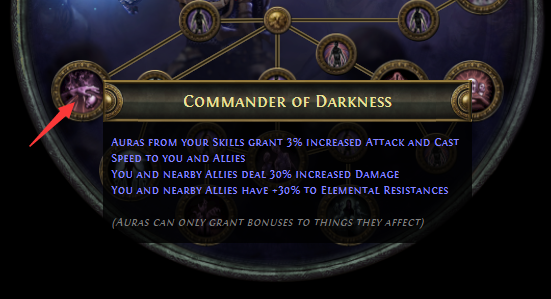
Poe Commander Of Darkness: A Poetic Exploration
In the realm of literature, Edgar Allan Poe emerges as a master of the macabre, a purveyor of the eerie and unsettling. His iconic tales and poems, infused with themes of darkness, mystery, and despair, have captivated readers for generations. Among his most enduring works is "The Raven," a haunting allegory that delves into the depths of human grief and madness.
Poe’s Poetic Legacy
Poe’s command of language and his ability to evoke profound emotions through rhythm and imagery place him among the pantheon of literary giants. His poetry is characterized by its haunting melodies, evocative diction, and its exploration of themes that resonate deeply with the human psyche. The following stanzas from "The Raven" exemplify Poe’s artistry:
Once upon a midnight dreary, while I pondered, weak and weary,
Over many a quaint and curious volume of forgotten lore—
When the nights were long and cold, and the days were short and old,
And the fire burned low and the wind blew cold,
And the snow fell fast and the ice grew bold,
And the raven sat upon the bust of Pallas just above my door,
Quoth the raven, “Nevermore.”
Types of Poetic Styles
The rich tapestry of Poe’s work lends itself to a variety of poetic writing styles:
- Lyricism: Poe’s lyrical poems, such as "Annabel Lee" and "To Helen," showcase his ability to capture the essence of love, beauty, and longing.
- Narrative: His narrative poems, like "The Tell-Tale Heart" and "A Descent into the Maelström," recount compelling stories with vivid imagery and suspenseful plots.
- Allegory: "The Raven" and other allegorical poems employ symbolism and metaphorical language to explore profound truths about the human condition.
- Gothic: Poe’s Gothic poems, such as "The Haunted Palace" and "The Fall of the House of Usher," delve into the realms of darkness, decay, and psychological torment.
Poetic Explorations of Poe
Inspired by the enigmatic figure of Edgar Allan Poe, numerous poets have crafted their own verses in homage to his literary genius:
Ode to Poe
Oh, master of darkness, with eyes of the night,
Your words weave shadows, piercing the mind’s light.
You delve into horrors that others dare not face,
A twisted symphony, a macabre embrace.
Your "Raven" cries out, a haunting refrain,
A symbol of loss, of longing, of pain.
In "Annabel Lee," a love so deep and true,
Cut short by death, a sorrow seen through.
Your tales of madness, of guilt and despair,
Reflect the darkness that we all share.
With masterful prose, you paint a ghostly scene,
Where nightmares thrive and sanity’s thin.
Poe’s Legacy
The influence of Edgar Allan Poe on poetry and literature extends far beyond his own lifetime. His ability to tap into the depths of human emotion and explore the darkest corners of the psyche has left an enduring mark on the literary landscape.
How to Write Poetry Inspired by Poe
Aspiring poets seeking to emulate Poe’s style may consider the following tips:
- Embrace the Macabre: Explore themes of death, loss, and the supernatural.
- Craft Haunting Imagery: Use vivid metaphors, similes, and personification to create evocative pictures in the reader’s mind.
- Develop a Rhythmic Cadence: Poe’s poetry often features a haunting rhythm and rhyme scheme.
- Delve into Symbolism: Employ symbols and allegorical elements to create layers of meaning.
- Study Poe’s Works: Read and analyze Poe’s poems to gain insights into his techniques and craft.
Reading Good Poetry
To fully appreciate the nuances of Poe’s poetry and other poetic works, consider the following tips:
- Read Aloud: The rhythm and melody of poetry are best experienced when read aloud.
- Pay Attention to Language: Analyze the poet’s choice of words, imagery, and figurative language.
- Explore Context: Consider the historical, cultural, and personal context in which the poem was written.
- Engage with the Emotions: Allow the poem to evoke emotions, thoughts, and personal reflections.
FAQs
- What is the significance of the raven in Poe’s poetry? The raven often symbolizes death, loss, and the unknown.
- How does Poe’s use of rhythm contribute to his poetry? Poe’s rhythmic patterns create a hypnotic and unsettling atmosphere.
- What are some common themes found in Poe’s poetry? Darkness, madness, despair, love, and death.
Conclusion
Edgar Allan Poe’s legacy as a master of the macabre and the enigmatic continues to inspire generations of poets and readers alike. His haunting verses delve into the depths of human emotion, exploring themes of darkness, loss, and the supernatural with exquisite artistry. By understanding Poe’s techniques and engaging deeply with his works, we can appreciate the power and beauty of his poetic vision.
Thank You and Acknowledgements
Thank you for your interest in this exploration of Edgar Allan Poe and his enduring poetic influence. I encourage you to read Poe’s original works and seek inspiration from his mastery. Please respect the intellectual property rights of authors and give due credit when sharing or using their creations. Together, let us celebrate the enduring power of poetry and the legacy of Edgar Allan Poe.
